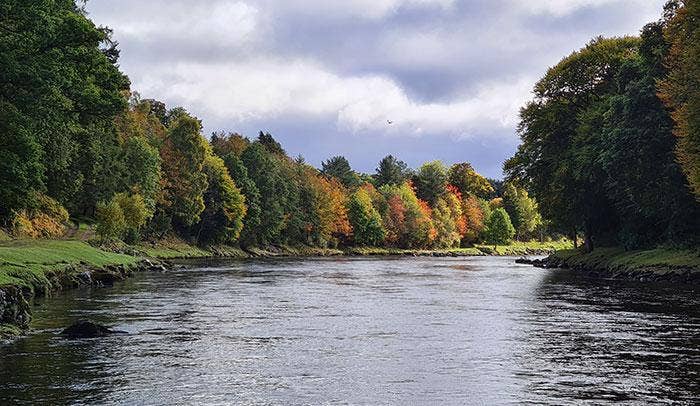If you are looking to make the transition from trout to salmon fishing, Jonny Muir has all the info you need to make a successful start.
For most of us, trout fishing is our way into the wonderful and varied world of fly fishing. The journey for most UK fly fishers usually starts on small stocked stillwaters, before moving to larger reservoirs, and then perhaps to the flowing water of a river, an environment that provides another dimension to controlling a fly and a fly line.
There are always new challenges on both stillwaters and trout rivers, but it’s only natural to start thinking about the bigger brother of the salmon family, Atlantic salmon, and the experiences that fishing for this most iconic of fish bring.
This blog will hopefully serve as a guide to help you on that mission.
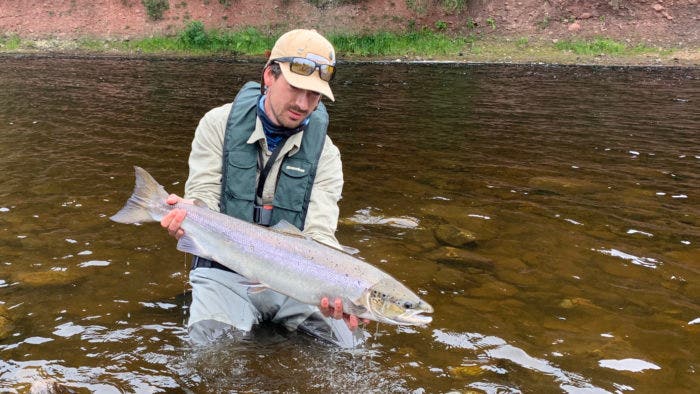

First things first…
Getting into salmon fishing will open up a whole new side of fly fishing to you. You’ll start to think about rivers in a very different way to when you are trout fishing and starting out with the right mindset is crucial to your long term enjoyment and to a successful salmon fishing ‘career’.
Keep your expectations low to begin with – salmon fishing is a marathon, not a sprint – enjoy the process of learning and you will be rewarded. Do remember that it is not uncommon for new salmon fishers to go many days, weeks, or even months before landing their first fish.
When and Where should I fish?
Salmon enter our rivers from the sea as early as January, with their numbers usually building up through the spring and into summer and autumn. Different rivers are known for being primarily ‘spring’, ‘summer’ or ‘autumn’ systems, based on the timing of their typical runs.
When you’re starting out, it’s wise to select a river which fishes best in late spring or summer, i.e. from May through to August. The reason being you’ll probably have more pleasant weather and longer hours of daylight during which to hone your new skills. Additionally, you won’t have the added technical demands which come with early spring or autumn fishing – namely the style of flies and fly lines that are often necessary in colder temperatures and higher river levels, these are subjects we will look at later in this series.
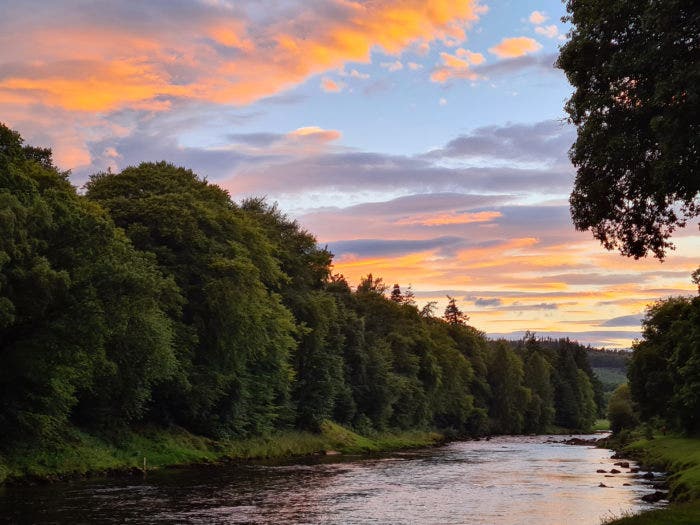

FishPal is an excellent online resource for finding fishing availability and analysing catch data. Use it to see which beats fish best in that pleasant spring/summer window, usually dependent on the nature of their pools and their position along the length of the river. It’s also wise to book beats that have full-time ghillies or guides. The knowledge you will gain from them is invaluable, with many having spent a lifetime getting to know the beats on their river and helping anglers to catch salmon.
I’ve booked my fishing. What tackle do I need?
Great! Now you have something to aim for, your first salmon fishing trip! Hopefully you’ve spoken with the ghillie from the beat you’ll be fishing, and they will have advised you on the most appropriate rod length, line and flies to purchase. Local knowledge is always best, but here’s a quick guide:
Coming from trout fishing, you probably have a lot of key items already: waders, tools, polarised sunglasses and appropriate clothing. The main difference of course is the salmon fishing tackle we use and the casting style this tackle demands.
Salmon rods and reels
With some exceptions, salmon fishing in the UK is generally done with a double-handed fly rod somewhere between 12ft and 15ft in length. Larger rivers require longer rods, and narrower rivers smaller rods, influenced by how far you may need to cast and how you’ll have to control your fly line. If you had to choose one fly rod as an ‘all-rounder’, that could be used on a wide range of rivers, something between 13ft and 14ft and with a line rating of 8/9 or 9/10 would get my vote.
We have a fantastic range of rods in this category, and getting started needn’t be too costly. Take for example the Shakespeare Oracle – a legendary salmon rod that has a cult following, and one that is available from a little over £100. Greys also have some great affordable options too such as the GR60, starting at around £270.
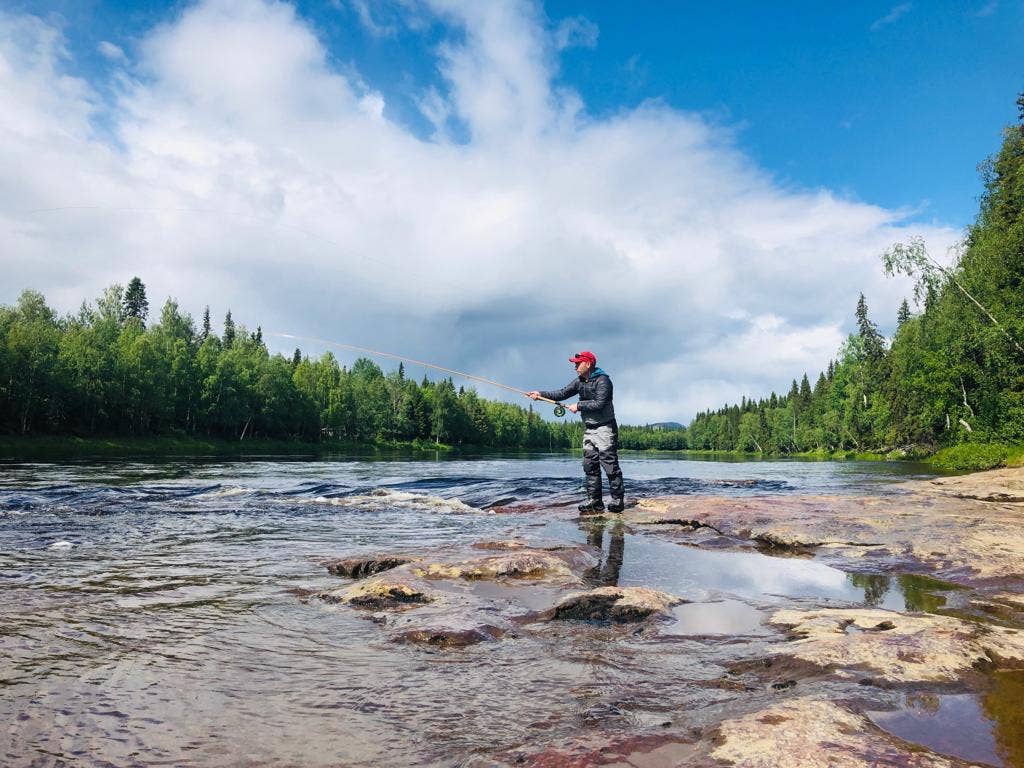

Fly reels needn’t run up too high a bill either, as long as you have something reliable and well-made with a smooth, adjustable drag that balances your rod. The Vision Deep is a great low cost option, available from around £100 in the salmon sizes. So too are the Shakespeare Oracle Salmon Fly Reel (approx £90), and the Redington Behemoth (approx £150), which balances longer rods very nicely.
Lines and leaders
When it comes to fly lines, these can be roughly separated into two categories commonly used in modern salmon fishing: full-belly or ‘Spey’ lines, and shooting heads.
Modern shooting head lines are often referred to as ‘Scandi’ or ‘Skagit’, based on their taper profile. Assuming you have booked your fishing in the late spring/summer window on a medium-sized river, the chances are you’ll only need a floating line. Something with a ‘Spey’ taper is the ideal place to start. Learning how to ‘Speycast’ is the most important skill you will have to learn, and a true ‘Spey’ fly line will help you get to grips with this. For a great entry-level option, check out the Snowbee 1D Short Head Spey Fly Line for just £58.99.
The last thing you’ll need are some spools of leader material and, with a decent selection of salmon flies in your box, you’re ready to go! Maxima monofilament is probably the most popular salmon leader material in the UK, and two 100m spools of 12lb and 15lb will set you back a little over £10. The ‘Chameleon’ version is popular on rivers that run with a ‘peaty’ tint, and the ‘Ultragreen’ is favoured on clear rivers. Ask your ghillie which flies they recommend and grab a selection from our online store before your trip.
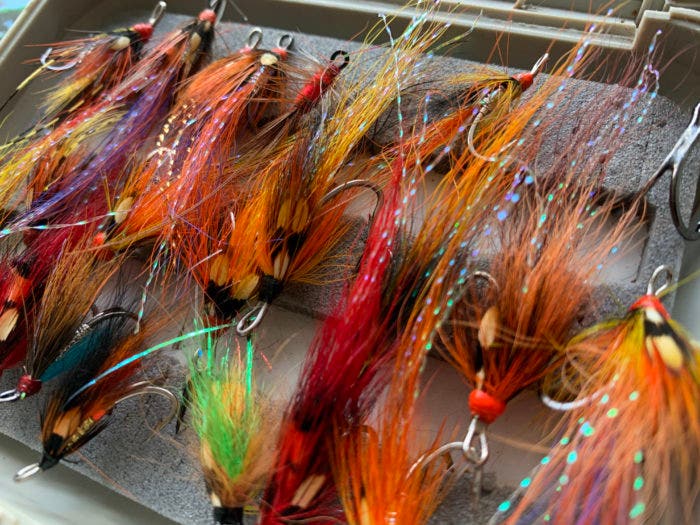

Learning to Speycast
This is the starting skill for any salmon fisher, and mastering the ‘Single Spey’ and ‘Double Spey’ will allow you to fish effectively from both sides of a river. Many ghillies are casting instructors but getting some Speycasting lessons before you hit the river for the first time will help you maximise your enjoyment. If you’re local to our Sportfish Game Fishing Centre give our team of instructors a call and book in a series of casting sessions.
Beginner’s Salmon Fishing Video Tips
To help ease you into the world of salmon fishing, Jonny Muir has started to put together a comprehensive series of short video tips that will, in time, be a great resource for all salmon fishers. You can check out the first episodes now!
PART ONE: In the first part of our beginner‘s salmon fishing video tip series, Jonny Muir looks at how you should correctly attach your fly line to a sinking tip or polyleader.
PART TWO: In the second part of our beginners salmon fishing video tip series, Jonny Muir looks at how you can create a loop in the end of your leader using a double Surgeon‘s Loop knot allowing you to easily connect a leader to your fly line or sink tip with a loop-to-loop connection.
Salmon fishing really can be quite simple and far less technical than trout or grayling fishing. Hopefully this blog has shown you just how easy it is to get started on your salmon fishing journey. Tight lines!

